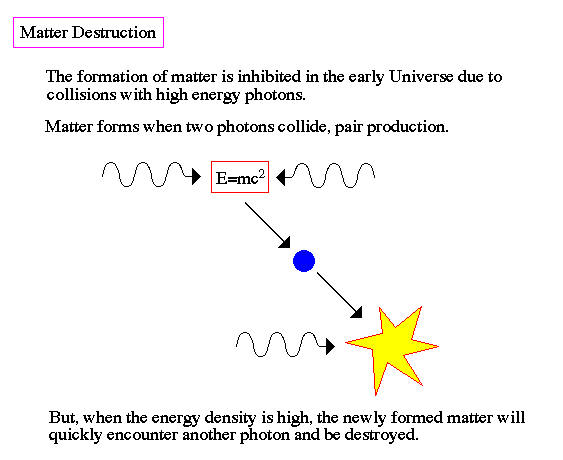
In the early Universe, pressures and temperature prevented the permanent establishment of elementary particles. Even quarks and leptons were unable to form stable objects until the Universe had cooled beyond the supergravity phase. If the fundamental building blocks of Nature (elementary particles) or spacetime itself were not permanent then what remained the same? The answer is symmetry.

Often symmetry is thought of as a relationship, but in fact it has its own identical that is preserved during the chaos and flux of the early Universe. Even though virtual particles are created and destroyed, there is always a symmetry to the process. For example, for every virtual electron that is formed a virtual positron (anti-electron) is also formed. There is a time symmetric, mirror-like quality to every interaction in the early Universe.
Symmetry also leads to conservation laws, and conservation laws limit the possible interactions between particles. Those imaginary processes that violate conservation laws are forbidden. So the existence of symmetry provides a source of order to the early Universe.
Pure symmetry is like a spinning coin. The coin has two states, but while spinning neither state is determined, and yet both states exist. The coin is in a state of both/or. When the coin hits the floor the symmetry is broken (its either heads or tails) and energy is released in the process (the noise the coin makes as it hits the ground).

The effect of symmetry breaking in the early Universe was a series of phase changes, much like when ice melts to water or water boils to stream. A phase change is the dramatic change in the internal order of a substance. When ice melts, the increased heat breaks the bonds in the lattice of water molecules, and the ice no longer holds its shape. Phase change in the early Universe occurs at the unification points of fundamental forces. The decoupling of those forces provides the energy input for the phase change.
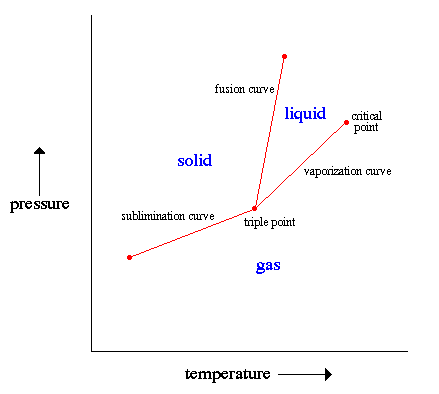
With respect to the Universe, a phase change during symmetry breaking is a point where the characteristics and the properties of the Universe make a radical change. At the supergravity symmetry breaking, the Universe passed from the Planck era of total chaos to the era of spacetime foam. Spacetime was acquired during the phase transition. During the GUT symmetry breaking, mass and spacetime separated and particles came into existence.
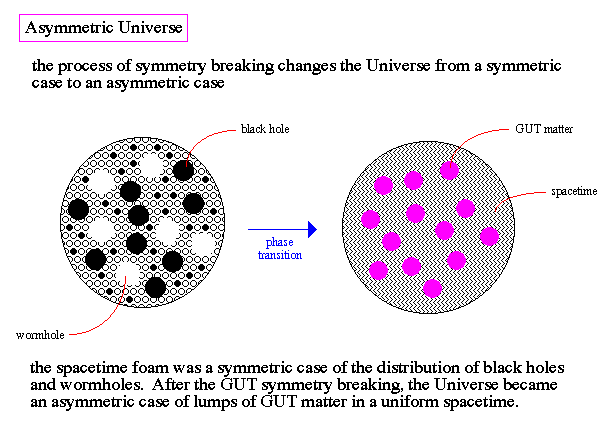
Notice that as symmetry breaks, there is less order, more chaos. The march of entropy in the Universe apples to the laws of Nature as well as matter. The Universe at the time of the cosmic singularity was a time of pure symmetry, all the forces had equal strength, all the matter particles had the same mass (zero), spacetime was the same everywhere (although all twisted and convolved).
Inflation:
There are two major problems for the Big Bang model of the creation of the Universe. They are
The flatness problem relates to the density parameter of the Universe, Ω. Values for Ω can take on any number between 0.01 and 5 (lower than 0.01 and galaxies can't form, more than 5 and the Universe is younger than the oldest rocks). The measured value is near 0.2. This is close to an Ω of 1, which is strange because Ω of 1 is an unstable point for the geometry of the Universe.
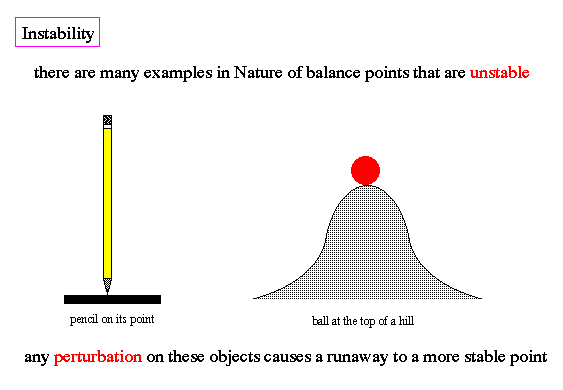
Values slightly below or above 1 in the early Universe rapidly grow to much less than 1 or much larger than 1 (like a ball at the top of a hill). So the fact that the measured value of 0.2 is so close to 1 that we expect to find in the future that our measured value is too low and that the Universe has a value of Ω exactly equal to 1 for stability. And therefore, the flatness problem is that some mechanism is needed to get a value for Ω to be exactly one (to balance the pencil).

The horizon problem concerns the fact that the Universe is isotropic. No matter what distant corners of the Universe you look at, the sizes and distribution of objects is exactly the same (the Cosmological Principle). But there is no reason to expect this since opposite sides of the Universe are not causally connected, any information that is be transmitted from one side would not reach the other side in the lifetime of the Universe (limited to travel at the speed of light).
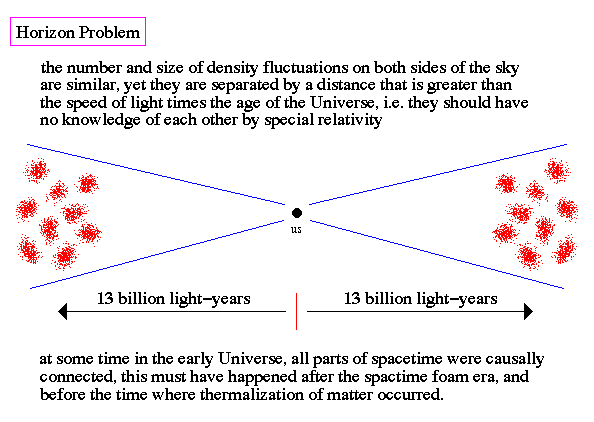
All the Universe has an origin at the Big Bang, but time didn't exist until after the Planck era. And by the end of that epoch, the Universe was already expanding such that opposite sides were not causally connected.
The solution to both the flatness and horizon problems is due to a phase of the Universe called inflation. Currently, inflation is the only theory that explains why the observable Universe is both homogeneous and causally connected. During inflation the Universe expanded a factor of 1054, so that our horizon now only sees a small piece of what was the total Universe from the Big Bang.
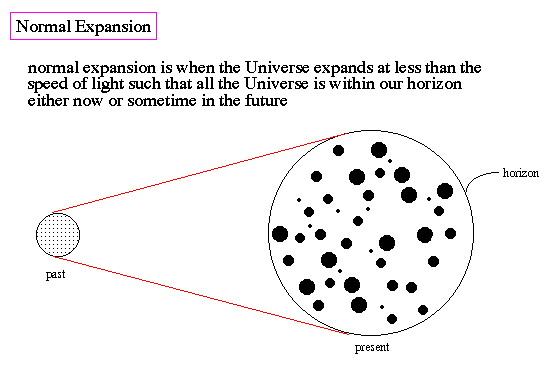


The cause of the inflation era was the symmetry breaking at the GUT unification point. At this moment, spacetime and matter separated and a tremendous amount of energy was released. This energy produced an overpressure that was applied not to the particles of matter, but to spacetime itself. Basically, the particles stood still as the space between them expanded at an exponential rate.

Note that this inflation was effectively at more than the speed of light, but since the expansion was on the geometry of the Universe itself, and not the matter, then there is no violation of special relativity. Our visible Universe, the part of the Big Bang within our horizon, is effectively a `bubble' on the larger Universe. However, those other bubbles are not physically real since they are outside our horizon. We can only relate to them in an imaginary, theoretical sense. They are outside our horizon and we will never be able to communicate with those other bubble universes.
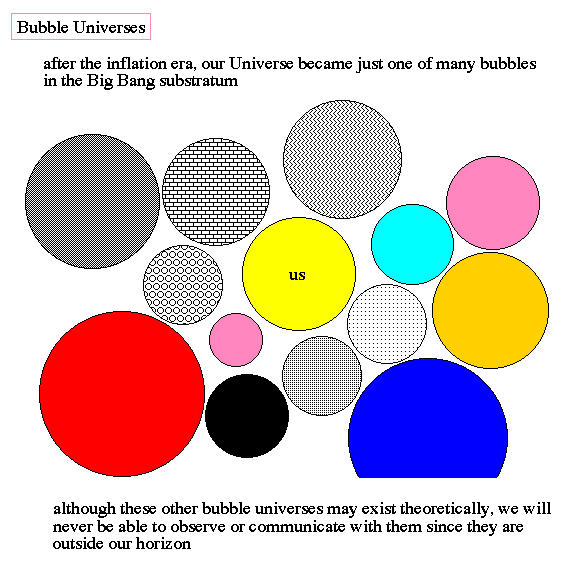
Although we talk about separate bubbles, draw as bubble next to each other, it is important to remember that each bubble contains an infinite space inside a finite volume. Note also that each of these bubbles can contain an infinite amount of space. How can a finite, bounded region contain an infinite 3D space? Consider the famous Escher print below titled "Heaven and Hell". There are an infinite number of devils and angels in this image, yet all drawn in a finite circle! For bubble universes, this infinite is in 3D space, the multiverse is embedded in 4D space. Thus, the bubbles do not "touch" in 3D space.

Inflation in the middle of each bubble has ceased, but continues at the edges. Thus, each bubble is separated by a rapidly expanding domain wall, a special topological feature to spacetime that means you can never travel to any of the other bubbles for you would have to travel over an infinite expanse of inflating spacetime. Since inflation is going on some place in every bubble at all times, this is referred to as eternal inflation and the ensemble of bubble universes is called the multiverse.

Notice how this solves the horizon problem in that our present Universe was simply a small piece of a larger Big Bang universe that was all in causal connection before the inflation era. Other bubble universes might have very different constants and evolutionary paths, but our Universe is composed of a small, isotropic slice of the bigger Big Bang universe.
Inflation also solves the flatness problem because of the exponential growth. Imagine a highly crumbled piece of paper. This paper represents the Big Bang universe before inflation. Inflation is like zooming in of some very, very small section of the paper. If we zoom in to a small enough scale the paper will appear flat. Our Universe must be exactly flat for the same reason, it is a very small piece of the larger Big Bang universe.
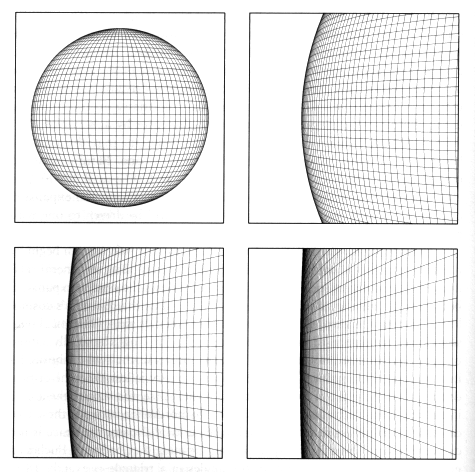
Thus, inflation resolves both the horizon and flatness problems. There is good reason to believe that the early Universe must go through an inflation-like event due to phase changes from symmetry breaking. However, notice that one result to inflation models of the early Universe is that we must measure a value of Ω at exactly 1.0, but our observations indicate a lower value. This leads to questions of how much matter is in the Universe, how was it created and in what form.

Eternal inflation is a hypothetical inflationary universe model, which is itself an outgrowth or extension of the Big Bang theory. According to eternal inflation, the inflationary phase of the universe's expansion lasts forever throughout most of the universe. Because the regions expand exponentially rapidly, most of the volume of the universe at any given time is inflating. Eternal inflation, therefore, produces a hypothetically infinite multiverse, in which only an insignificant fractal volume ends inflation.